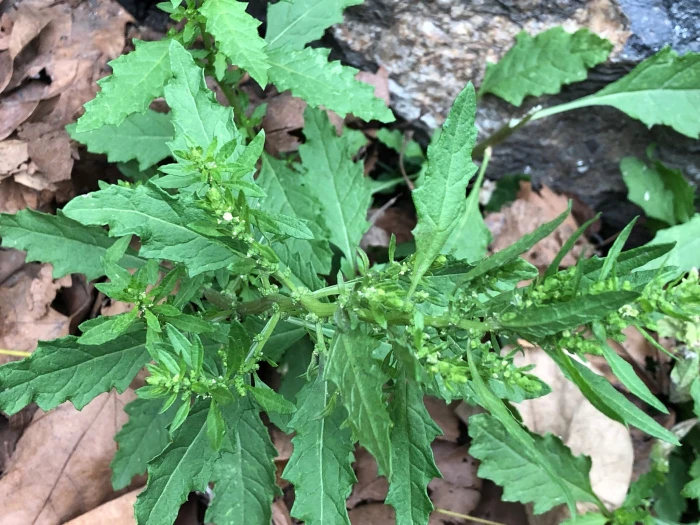Mexican Tea
(Dysphania ambrosioides)
Mexican Tea (Dysphania ambrosioides)
/
/

Jason Grant
CC BY 4.0






















































Estimated Native Range
Climate Requirements for Bristol, Connecticut
| This Plant | Your Site | Plant Suitability for Your Location | ||
|---|---|---|---|---|
| • Precipitation | 1" - 182" | 47" | Aquatic | Aquatic |
| • High Temp. | -38°F - 110°F | 83°F | Your summer temperatures are normal for this plant. | Excellent |
| • Low Temp. | -16°F - 73°F | 16°F | Your winter temperatures are normal for this plant | Excellent |
Summary
Mexican Tea is valued for its ease of growth and maintenance, as well as its use as a culinary and medicinal plant. It is commonly cultivated in herb gardens and as a natural insect repellent. In cultivation, it prefers full sun but can tolerate part shade, requires medium amounts of water, and grows best in soils with medium drainage. While it is not known for a particular problem with diseases, it can become weedy and potentially invasive outside its native range, so caution is advised when planting it in areas where it could spread uncontrollably.CC BY-SA 4.0
Plant Description
- Plant Type: Subshrub, Herb
- Height: 1-3 feet
- Width: 0.4-0.9 feet
- Growth Rate: Moderate
- Flower Color: N/A
- Flowering Season: Summer, Fall
- Leaf Retention:
Growth Requirements
- Sun: Full Sun
- Water: Medium
- Drainage: Medium
Common Uses
Edible*Disclaimer: Easyscape's listed plant edibility is for informational use. Always verify the safety and proper identification of any plant before consumption., Fragrant, Low Maintenance
Natural Habitat
Thrives in a variety of habitats including disturbed sites, roadsides, and cultivated fields
Other Names
Common Names: Wormseed, Jesuit’s Tea, Mexican-Tea, Wormseed Goosefoot, Duft-Drüsengänsefuß, Ambrosine, Chénopode Fausse-Ambroisie, Thé De Silésie, Thé Des Jésuites, Thé Du Mexique
Scientific Names: Dysphania ambrosioides, Chenopodium ambrosioides, Teloxys ambrosioides, Vulvaria ambrosioides, Chenopodium ambrosioides var. ambrosioides, Ambrina ambrosioides, Chenopodium ambrosioides var. pubescens, Chenopodium suffruticosum, Chenopodium ambrosioides subsp. suffruticosum
GBIF Accepted Name: Dysphania ambrosioides (L.) Mosyakin & Clemants